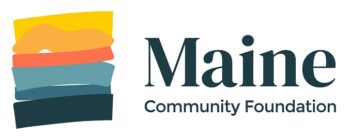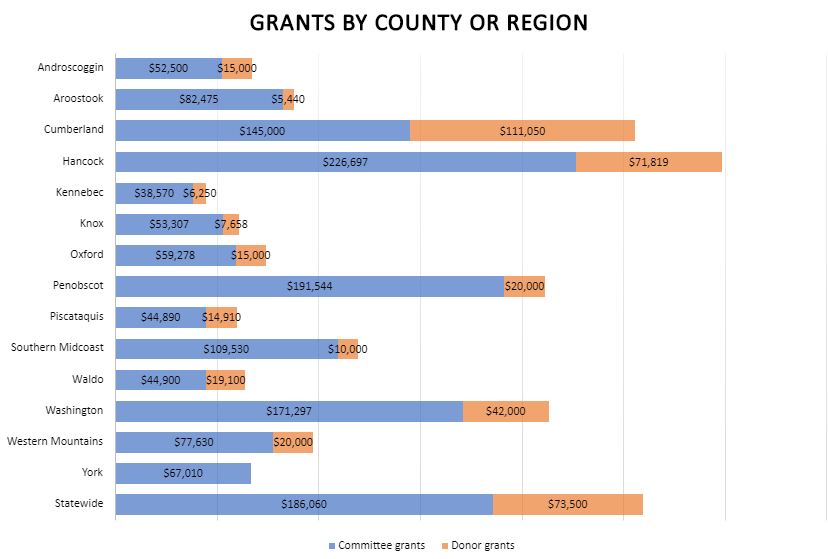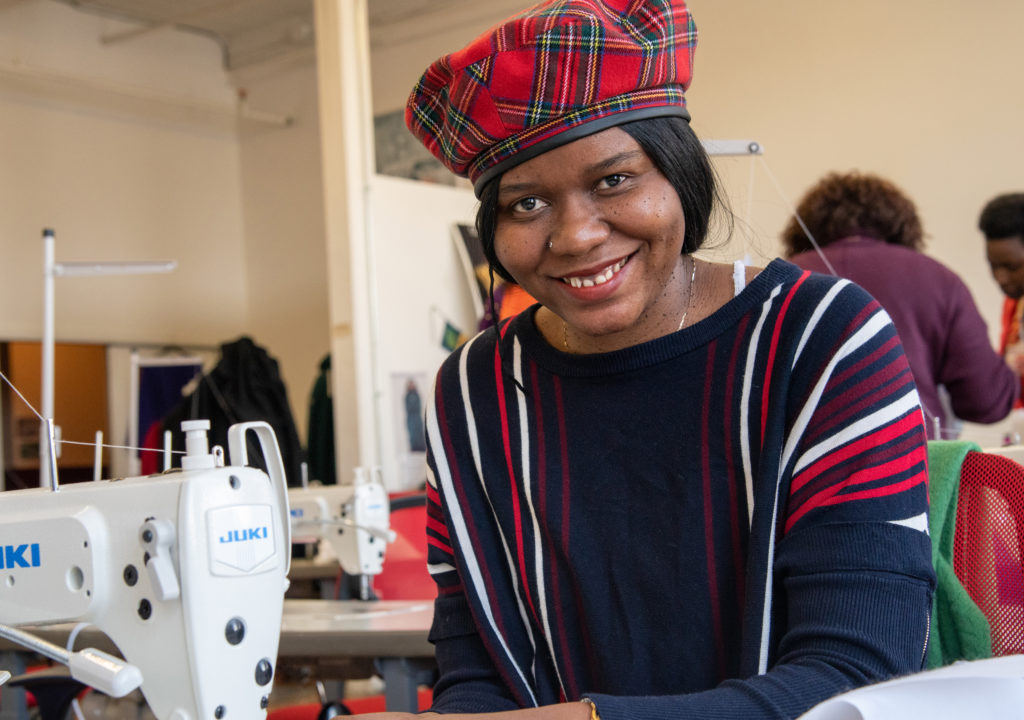
Common Threads of Maine in Westbrook received a grant from the Cumberland County committee to offer classes on advanced sewing skills and textile business entrepreneurship to help professional stitchers advance in their careers. Photo Tom McPherson
Welcome to MaineCF’s second Community Building Grant Program Report, which shares information about the grantmaking process and decisions of our largest grant program. A PDF of this report can be found here.
Our goals for this report:
- Be accountable to our nonprofit partners, communities, and donors by showing what was funded
- Share what we saw and learned from applicants, including any trends and lessons
- Help nonprofits understand, through reporting and examples, how the program works.
This year, for the first time, MaineCF offered general support grants to organizations with budgets under $500,000. If you are not familiar with the Community Building Grant Program, please see the program information here. You can see a full listing of grant recipients from the past three years here. Please note that this report focuses exclusively on the Community Building Grant Program and is not reflective of MaineCF’s other grant programs. You’ll find information on other grant programs and deadlines here.
How Community Building Grant Program Decisions Are Made
The Community Building Grant Program is administered through MaineCF's County and Regional Program. Grant decisions are made by 15 county and regional committees, each comprised of eight to 12 local volunteer county advisors. Most of the funding comes from permanent county or regional funds that are dedicated to supporting nonprofits in their area.
MaineCF’s county and regional fund grant budgets vary depending upon the age of the fund and the number of annual gifts each receives. Some counties and regions also have additional related funds that are used for Community Building grants.
2022 Community Building Summary
In 2022, MaineCF’s county and regional committees distributed approximately $1.6 million to 192 nonprofit organizations. An additional 64 grants totaling $431,727 came from donors with donor-advised funds. The number of proposals received per committee varies substantially. This year, Waldo County received only 10 eligible proposals while Cumberland received 76. Because of this, the approval rate by committee also varies. In total across the entire state, 45 percent of eligible proposals received funding.
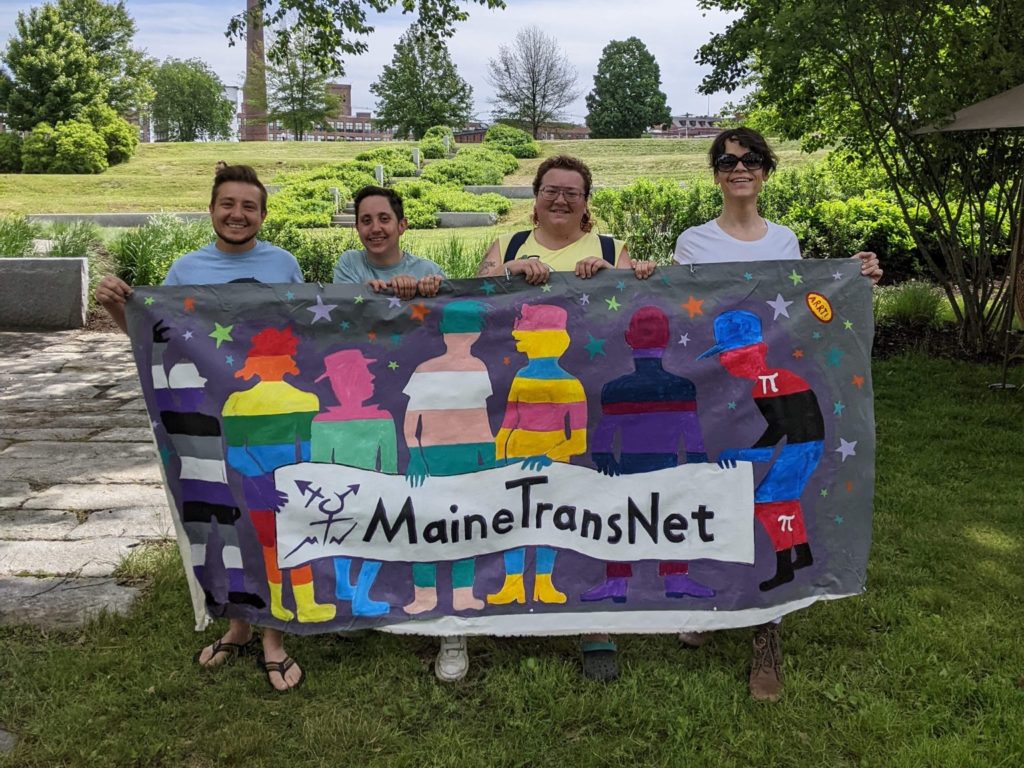
The Maine Transgender Network received a general support grant from the Cumberland County Committee to provide peer-based support and suicide-prevention services for transgender people. Photo: MaineTransNet
Types of support
For the first time this year, in response to nonprofit needs, we offered flexible and unrestricted general support to smaller organizations (those with operating budgets under $500,000). Municipalities, government agencies, public schools, faith-based organizations, fiscally sponsored organizations, and organizations outside Maine were not eligible for general support. However, all these types of organizations were eligible for regular project support.
We received 168 requests for general support that totaled $1.6 million and 267 requests for project support that totaled $2.4 million. Our county and regional committees funded 78 general support grants ($649,157) and 114 project support grants ($901,531).
We were concerned that our review committees might feel more comfortable awarding project grants because they have clearly stated goals, activities, and budgets. We ensured that general support and project support proposals were treated equally by establishing a goal for each committee of the amount of project and general support grants they should award based on amounts requested for each type of funding. As noted in the graph below, our county and regional committees funded at similar levels to the percentage of requests received. 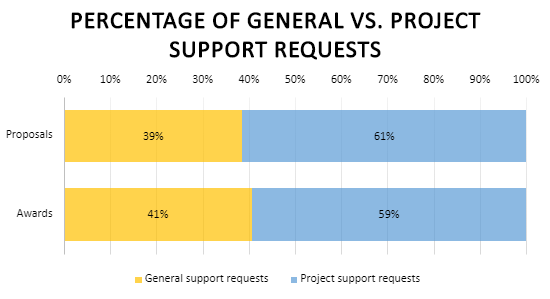
The addition of general support grants had many benefits, including bringing in new organizations that previously did not qualify under former project-only criteria.
One example is the Lubec Community Outreach Center, which houses a food pantry, low-cost, after-school care and camps for kids, parenting classes, a clothes closet, and other critical community supports. These are all part of their mission, not new or expanding projects, which means they were not eligible to receive grants under project guidelines.
This year the Washington County Committee recommended the organization receive a general support grant to support their good work. Adding general support grants was a learning experience for staff, advisors, and nonprofits. As we reviewed the proposals, we noticed some applicants submitted requests that were not eligible.
For example, organizations with budgets over $500,000 applied for general support. Other organizations applied for project support when general support may have been a better fit.
We will work over the next few months to clarify the criteria around funding types to make the process smoother next year.
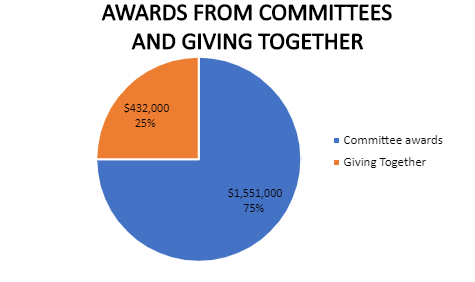 Giving Together
Giving Together
In addition to the grants awarded by county and regional committees, applicants to the Community Building Grant Program may receive funding from donors through our Giving Together program. Giving Together allows people with donor-advised funds to review and award grants to proposals that match their interest areas. MaineCF staff often help donors with this process and help them learn about new organizations or projects. Perhaps most importantly, this partnership allows MaineCF to fund more proposals than our committees alone could support.
In 2022, 34 donors made 64 grants through Giving Together that totaled $431,727, which is one quarter of all proposals funded through the Community Building Grant Program. Donor grants supported organizations and projects across the state; the highest levels of support went toward proposals to the Cumberland County and Statewide committees.

In addition to enabling more grant funding, Giving Together connects more donors with organizations and creates potential for future support. For the first time, proposals we received for our competitive grant programs will be available to donors on our online Giving Together portal for approximately one year until the next grant cycle. This means it’s possible that donors will continue to award grants and the number of these donor-funded grants could still increase.
Here’s one example: At the end of 2021, new donors set up a fund at the foundation and were eager to use their new donor-advised fund to support organizations that might match their interests. MaineCF staff showed the advisors how to use the donor portal with a lesson on Giving Together. The platform allowed the donor to sort by grant program, geography, and interest area – or any combination. The advisor later independently discovered several proposals online to support. The donors ended up giving $50,000 to nine organizations across six committees. This was a win for everyone: the donor, the organizations, and the committees that had more funding to recommend from their fixed budgets.
Growth of grantmaking over time through committee grants and Giving Together grants clearly shows how donor funding is helping MaineCF provide more support each year. In 2022, this combined funding totaled almost $2 million for this single grant program.
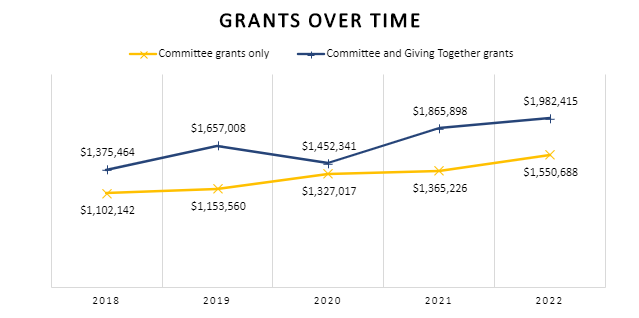
Funding themes
Community Building Grant Program applicants may indicate up to three issue areas they address through their organization or project.
The top issue areas in both requests and grants across both funding types in 2022 were community improvement, education, and youth development. The biggest percentage of general support proposals were for work related to crime/legal issues and mental health/crisis intervention.
We received more project support proposals for work related to health (diseases, disorders), public safety/disaster preparedness, and animals. These may reflect the size of organizations doing this type of work because general support requests were limited to organizations with smaller budgets.
Here is the distribution of issue areas across all funded grants. More than one issue area may be listed for each grant because grant applicants could select up to three issue areas.
| Issue Area | Number of grants |
| Community Improvement/Capacity Building | 78 |
| Education | 73 |
| Youth Development | 52 |
| Public/Societal Benefit | 47 |
| Arts/Culture/Humanities | 46 |
| Human Services | 44 |
| Environment | 24 |
| Food/Agriculture/Nutrition | 24 |
| Housing/Shelter | 21 |
| Recreation/Sports | 19 |
| Mental Health/Crisis Intervention | 19 |
| Civil Rights/Social Action/Advocacy | 15 |
| Employment | 13 |
| Health Care | 13 |
| Philanthropy/Volunteerism | 8 |
| Animal-Related | 2 |
| Crime/Legal-Related | 2 |
| Public Safety/Disaster Preparedness/Relief | 2 |
| Unknown/Other | 2 |
| Science/Technology | 1 |
| Diseases/Disorders/Medical Disciplines | 1 |
| Social Science | 1 |
These top issue areas differed from 2021. We saw significant growth in requests around youth development, recreation and sports, environment, and mental health or crisis intervention. While nothing conclusive can be drawn from this change, it may show increasing nonprofit work on the pressing issue of youth mental health and well-being.
While work related to health, animals and civil rights were among the most popular requests, we saw fewer of these requests compared to last year. The chart below shows the differences between 2022 and 2021 in interest areas (variations are normal). We also added a few new interest areas in 2022.
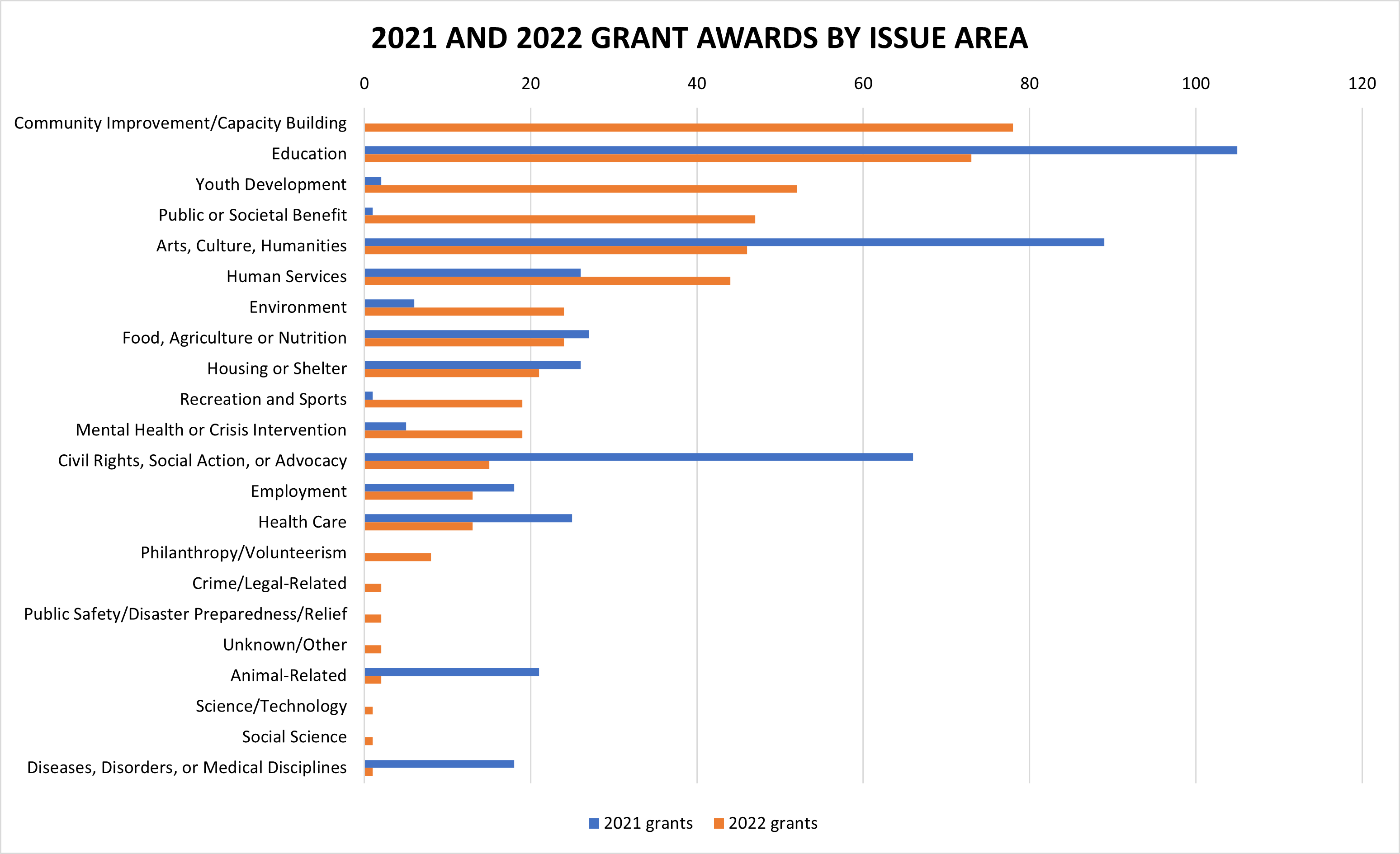
The Community Building program is intended to fund in all areas and provide broad support across sectors, geography, and issue areas. The committees do not prioritize any issue areas over others; however, advisors bring local knowledge to the review process and as a result may be responsive to pressing community needs. This can contribute to uneven approval rates across issue areas.
The five issue areas receiving the highest approval rates for 2022 are:
| Issue Area | TOTAL proposals | TOTAL Awarded | % approval |
| Housing/Shelter | 42 | 21 | 50% |
| Mental Health/Crisis Intervention | 39 | 19 | 48.7% |
| Human Services | 96 | 44 | 45.8% |
| Civil Rights/Social Action/Advocacy | 35 | 15 | 42.9% |
| Youth Development | 123 | 52 | 42.3% |
Decision news
We are always seeking ways to improve the efficiency our grant cycles. This year we notified applicants about awards by email, which cut a few weeks off our normal notification timeline.
We hope this report helps you understand more about the Community Building Grant Program, what we saw in 2022, and how our donors support the process. Any changes to the grant program for 2023, along with details for informational webinars, will be available on our website after November 15.
We are always looking to improve our reporting and welcome your feedback. Please send any comments to grants@mainecf.org.
